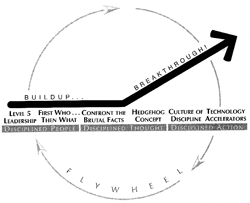Before moving to the agenda on weekly meetings I thought I should approach a question a lot of people have about meetings. Why? Why more meetings?
First realize that we’re not talking about the kind of meetings that are normally run at most companies. We’re talking about developing meetings that have a purpose, a specific agenda, and that are organized around the priorities of the company, and the priorities of each individual and department.
Without this distinction you’re looking at the same monotonous, redundant meeting offerings that many detest.
With a specific agenda that is dedicated to the priorities the team committed to, with measurements that require responsibility and recognition for their efforts to attain them, a new dynamic takes over. With every attendee contributing by providing their measurements, good news, customer and employee feedback and opportunity to provide their input on collective intelligence, you can eliminate the normal boring meeting process.
Finally there’s another important aspect that Jim Collins referred to in Good to Great. The process of moving from good to great involves in order; disciplined people, disciplined thought, and disciplined action.  A disciplined leader alone will not sustain good to great company. It requires a culture of discipline for great company to endure.
A disciplined leader alone will not sustain good to great company. It requires a culture of discipline for great company to endure.
A framework for disciplined culture is a consistent meeting pattern that works to give the business momentum. Only when you have specific agendas focused on company and individual priorities with measured accountability can you develop a culture of discipline.
Next blog the weekly meeting structure.






.jpeg?width=150&height=135&name=Hand%20with%20marker%20writing%20the%20question%20Whats%20Next_%20(1).jpeg)

